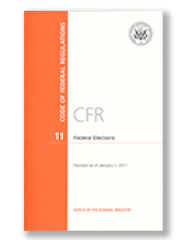
"White House" by jschauma is licensed under CC BY 2.0
The two major categories of administrative law are:
 Code of Federal Regulations (CFR)
Code of Federal Regulations (CFR)
The Education Resources Information Center (ERIC) is an online bibliographic and full-text digital library of education research, including journal articles and non-journal materials. ERIC is a program administered by the National Center for Education Evaluation and Regional Assistance (NCEE) of the Institute of Education Sciences (IES) at the U.S. Department of Education (the Department).
Excerpt from Executive Branch description at Whitehouse.gov:
"The power of the Executive Branch is vested in the President of the United States, who also acts as head of state and Commander-in-Chief of the armed forces. The President is responsible for implementing and enforcing the laws written by Congress and, to that end, appoints the heads of the federal agencies, including the Cabinet. The Vice President is also part of the Executive Branch, ready to assume the Presidency should the need arise."